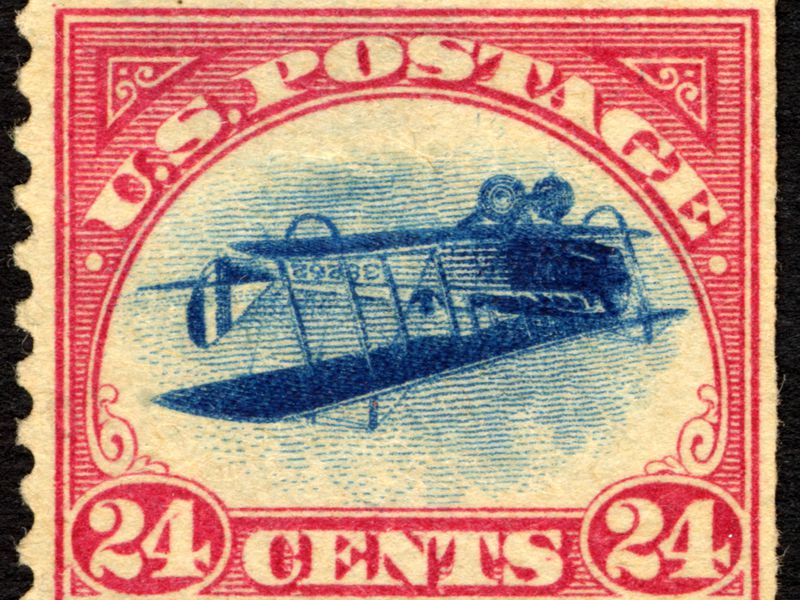On May 14, 1918, William T. Robey, a bank teller at Hibbs and Company in Washington, D.C. traveled to the post office to buy a new stamp celebrating the launch of the U.S. airmail service. The stamp featured a Curtiss JN-4, or “Jenny,” the same plane set to start delivering mail the next day. The stamp also had two colors, which was only the second time the Postal Service had attempted such a printing feat. But the first ones printed also had a huge error, and the stamp Robey bought showcased it: the Jenny on his stamp appeared upside down, as it it were doing some elaborate trick. The person selling the stamps on that day had never seen an airplane, so didn’t know the difference, and Robey took the opportunity to purchase a 100-count sheet for $24. He then told his fellow stamp collector friends, all who wanted one. But Robey hid his 100-stack and then, in a panic under mounting pressure, sold the stamps to Eugene Klein, a Philadelphia businessman, for $15,000. The money allowed him to buy a new house and a car.
But had Robey been patient, he could have made even more. He assumed that more flawed stamps would emerge since they were usually printed more than a 100 at a time, but the other mistakes were caught and destroyed, so his 100 stack was all that was left.
Since then, the stamps that remain outside of museums have been bought for millions. In 1989, an anonymous buyer purchased a block for more than $1 million, and at a recent auction in New York, a different block sold for nearly $3 million.
Thanks for reading InsideHook. Sign up for our daily newsletter and be in the know.


















